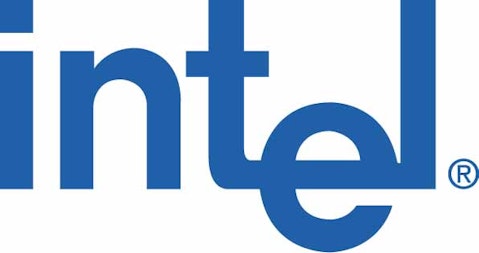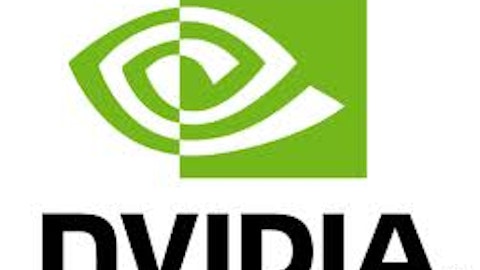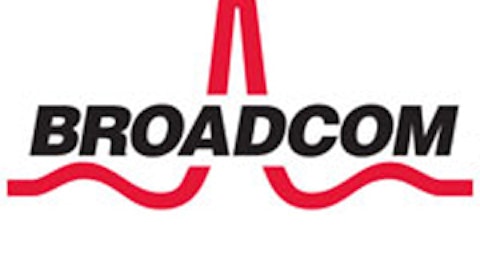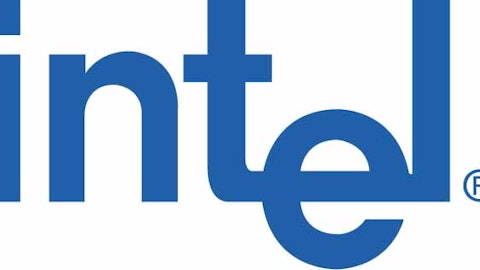It’s been a rough year for Intel Corporation (NASDAQ:INTC) investors. Their stock has suffered from the one-two punch of a collapsing stock price and the popular belief that its core business is going the way of the buggy whip. Shares of this technology behemoth wallow at multi-year lows after losing more than a quarter of their value since the spring of 2012.
Intel Corporation (NASDAQ:INTC)’s woes were exacerbated when the company’s fiscal fourth-quarter and full-year results landed on the market with a thud. Financial pundits were quick to confidently proclaim that the personal computer is sure to go extinct along with the dodo bird. Assuming that the PC is indeed dead technology, then the impetus is on Intel to finally make headway into the mobile market that has so far eluded the semiconductor company. While progress on this front has been painfully slow, there may be indications that Intel is finally getting its act together. If this is true, will this mark the beginning of Intel’s rise from the ashes?

Indeed, Intel Corporation (NASDAQ:INTC)’s fourth-quarter results were poor. There’s no sugarcoating the fact that earnings for the quarter dropped 27% year over year. Revenues fell 3% versus the prior year’s fourth quarter, and the company expects another 6% decline in revenues for the current quarter. For the full year, revenues and earnings per share dropped 1.2% and 11%, respectively. To add to investors’ misery, the market got spooked about Intel’s plan to spend $13 billion on capital expenditures next year. Gross margins are heavily scrutinized for a semiconductor company such as Intel, and the market wasn’t pleased to see margin contraction of almost seven percentage points from last year’s fourth quarter.
However, there may a reason for investor optimism about Intel’s frustratingly slow entry into the mobile chip market. At the 2013 Mobile World Conference, Intel Corporation (NASDAQ:INTC) CEO Paul Otellini touted the company’s chips in 10 phones shipping in 20 countries (though not the U.S.), and it keeps improving its power consumption and performance.
At the same conference a year ago, Intel’s mobile chips were almost nonexistent. Specifically, Intel points to its Clover Trail chip as a means of significantly penetrating the smartphone market. Furthermore, Intel now believes it has made significant progress on power consumption, an issue that had previously hampered the company’s reputation. Intel now believes its chips are as efficient as those offered by ARM.
It’s all about mobile
The financial media has essentially made up its mind that the PC is officially dead, and that investors would be better served buying stock in Qualcomm (NASDAQ:QCOM) or Broadcom (NASDAQ:BRCM). The investing thesis here is that Intel has fallen too far behind the trend away from desktop and laptop computers. However, you would be well-advised not to write off Intel completely, as it finally appears the company is making progress in mobile.
To be fair, both Qualcomm and Broadcom are good companies. Qualcomm revealed in its 2012 annual report, that revenue and diluted earnings per share increased by 27% and 39%, respectively. The company has raised its dividend by more than 12% compounded annually over the last five years.
Broadcom saw full-year fiscal 2012 sales growth of more than 8%, although profitability is an ongoing concern after the company revealed diluted earnings per share decreased by almost 25% year over year. To soothe investor concerns, Broadcom raised its dividend by 10% in January. Even with these increases, the stock only yields 1.3% at current prices, and the stock carries a rich valuation of more than 27 times its 2012 diluted earnings per share.
The Foolish takeaway
If Intel were to finally make meaningful progress on the mobile chip front, the investing opportunity would be abundantly clear. Intel is trading very cheaply by most valuation measures. Despite the uproar about the company’s supposedly terrible quarter, Intel still reported $2.13 in full-year 2012 earnings. That means that at a price of $21, investors are paying less than 10 times trailing earnings. It’s clear that the market has priced in little to no growth for Intel.
Effectively entering the mobile market would be a boon for Intel and the positive catalyst that might finally result in multiple expansion instead of multiple contraction. While Intel might not command the same valuations as Broadcom or Qualcomm, you’d have to think the market would meet somewhere in the middle — likely at a higher P/E ratio than where it is currently. For the time being, investors willing to take that chance are offered a 4.5% dividend yield to wait for this to take hold.
The article Can an Exciting Development Bring this Chip Maker Back to Life? originally appeared on Fool.com.
Copyright © 1995 – 2013 The Motley Fool, LLC. All rights reserved. The Motley Fool has a disclosure policy.





